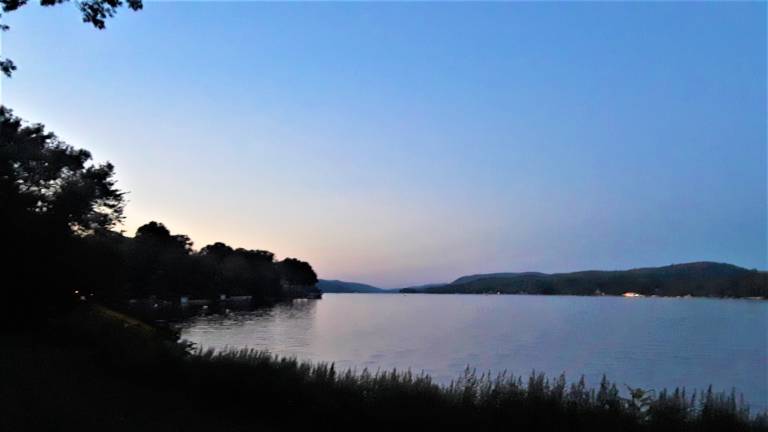Greenwood Lake Commission Co-Chairman Paul Zarrillo said Thursday that Montclair State University will conduct testing Friday at 17 locations on both the New York and New Jersey sides of Greenwood Lake.
“The Greenwood Lake Commission has commissioned Montclair State University to do a comprehensive testing program Friday July 19,” Zarrillo said in an email Thursday. “It will consist of testing for nine elements at 17 locations throughout New Jersey and New York. This will help us identify the sources and check whether the toxins are on the move or concentrated and stationary.”
Zarrillo said that the commission was notified Wednesday that the New Jersey Department of Environmental Protection confirmed that the New Jersey side of Greenwood Lake has a Harmful Algal Bloom (HAB).
“All water activities where you could come in contact with the water should be halted until further notice,” the email said. “The lake is open to boating and fishing, but do not come in contact with the water in New Jersey.”
The bloom, according to the DEP, can grow due to the recent spate of heavy, intense rainstorms and the heat during the past few weeks.
The restrictions on lake activity led West Milford Mayor Michele Dale to open the Bubbling Springs Park on Macopin Road to free swimming for residents this weekend.
Residents just need to show their driver’s licenses at the gate to take advantage of the free swimming at the park during the weekend, Dale said.
Forecasters are predicting exceedingly hot and humid temperatures and potentially heavy rain for this weekend, which could cause the bloom to grow.
Although there are currently no restrictions on the New York side of the lake, Greenwood Lake, New York, Mayor Jesse Dwyer said testing and monitoring of that side would continue.
According to the DEP, the bloom, which can cause a variety of symptoms like irritation, rashes or in some cases, vomiting if the water is ingested, happens when phosphorus runs off into a body of water, acting as a nutrient, and then is exposed to heat and sunlight.
Those factors cause the bloom to grow, officials said.
A similar bloom was flagged at Lake Hopatcong late last month and similar restrictions imposed there.
